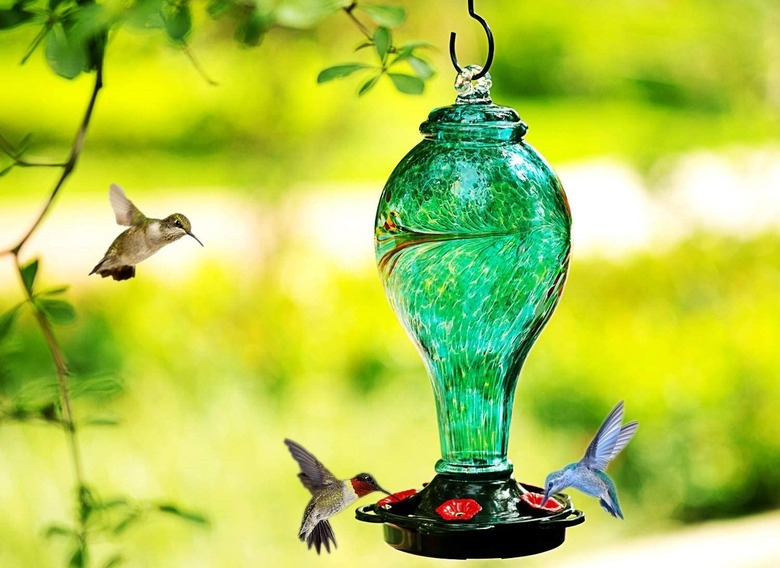When Do You Hang Out Your Hummingbird Feeders In Michigan?
We may receive a commission on purchases made from links.
The majority of hummingbird species migrate south for the winter, with the notable exception of the Anna's hummingbird, which is native to the Pacific Coast. That means if you live in Michigan, there's no point in leaving out your hummingbird feeder during winter because you'll be wasting your time, money, and efforts creating fresh food for birds who won't be there to eat it. However, if you want to get as many hummingbirds as possible to visit your yard, you'll want to have ample food available for the birds as soon as they start migrating north again, so knowing when to put out your feeders is key.
Tip
You should typically put your feeder out in mid-April and remove it by early fall. Make sure to leave it out two weeks after you spotted the last hummer in your yard.
About the Hummingbirds of Michigan
About the Hummingbirds of Michigan
The only hummingbird to regularly visit the state is the ruby-throated hummer, which nests in northeast and southern Canada and is found in Michigan throughout the summer. While these are the most common hummers in Michigan, residents occasionally get visits from rufous, broad-billed, violet-ear, and white-eared hummingbirds. In winter, these birds typically migrate to warmer areas in Central America, such as Mexico, but some species instead spend their winter along the Gulf Coast in Florida, Louisiana, and Texas.
When to Put Out Feeders
When to Put Out Feeders
While most hummingbirds migrate back to Michigan in May, it doesn't hurt to put your feeder out a little early in mid-April. Ideally, you should have your feeders in place before the earliest birds return so they remember your yard as a place to visit for a quick snack. Place feeders in areas protected from direct sunlight during peak afternoon heat so the food doesn't spoil as quickly.
Bird Feeder Maintenance
Bird Feeder Maintenance
Avoid using commercial hummingbird feed, which is not as healthy for the birds nor as popular with them. Instead, make your own hummingbird nectar by dissolving 1 part sugar into 4 parts water. Start out by filling your feeder only a third full to avoid wasting nectar, but as you get more birds during the summer, adjust your fill size accordingly.
Clean your feeder and replace the nectar at least once a week at the start of the season and at least twice a week during particularly hot summer weeks because the nectar will go bad more quickly. Don't neglect to replace it just because it looks clean or because it doesn't appear to have been touched. If you notice any mold, clean the feeder immediately with a weak vinegar and water solution and be sure to rinse well. Don't use dish soaps, which can leave behind unhealthy residues.
When to Take Down Feeders
When to Take Down Feeders
Despite an old myth that says leaving your feeder out during fall will cause birds not to migrate, you should actually keep your feeders out as long as there are birds to eat from them. In fact, these birds rely on these food supplies to fatten themselves up before the long, difficult migration on which they are about to embark. Most birds will be gone by September, but to make sure any stragglers have enough food, keep your feeder out for a full two weeks after you see the last hummingbird in your region.
